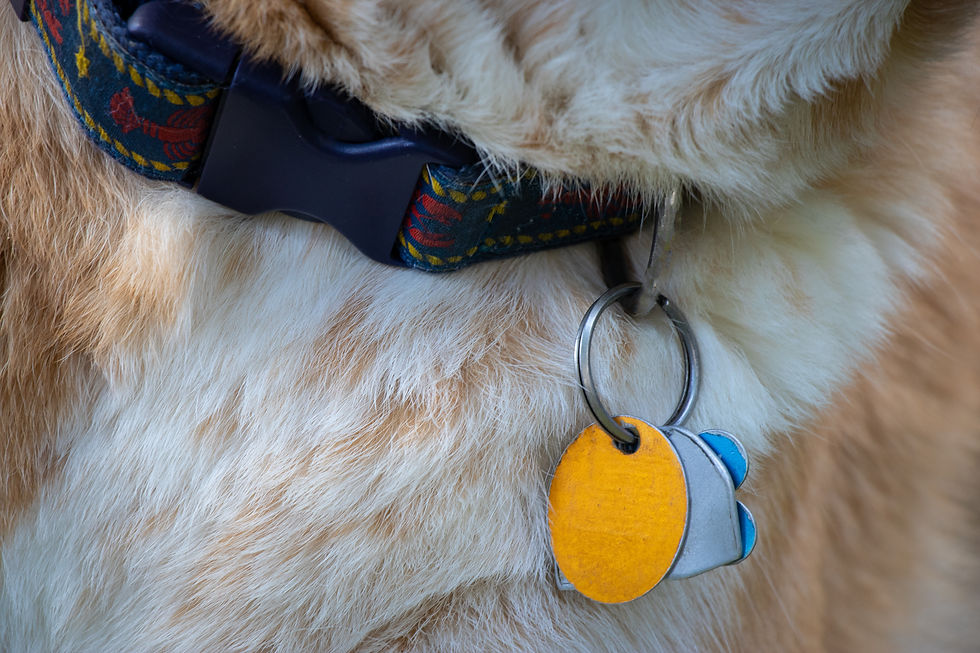Preventing pet theft: 4 precautions pet lovers can take
- Keck's Haven
- Feb 12, 2019
- 3 min read

Meghann Evans, PSI
February 14th—it’s a day set aside each year to think about love, valentines and…pet theft? That’s right, the day commonly known as Valentine’s Day also marks the observance of another important event: Pet Theft Awareness Day.
While it may be hard to imagine why anyone would steal a pet from its caretakers, it happens all too frequently. According to Last Chance for Animals, an estimated 2 million pets are stolen in the United States each year.
Fortunately, there are some precautions you can take each day to minimize the risk of pet theft.
1. Never leave pets unattended in public.
As a pet sitter or pet owner, it is your responsibility to make sure you stay with pets at all times when you are out in public, whether you are at a dog park or the grocery store. Leaving a pet alone even for a few moments can put them at risk of theft, so always keep them with you, and keep them on a leash. Even if you are nearby, it is easier for a criminal to try to run off with a pet if it is not on a leash.
If the dog will be spending time outside at home, ensure that the yard has a secure fence. Just keep in mind that it is still best not to leave the dog unattended for long, since even fences are not a deterrent to some criminals.
Another important thing to remember: Never leave pets in your vehicle, even if you plan to be back in a few minutes. Not only does it pose a health risk to pets, since temperatures can drop or rise quickly even while the heat or air conditioning are on, but it also leaves the pets susceptible to people with bad intentions who may see them alone in your car.
2. Research your pet-care providers.
Whether you are looking for a pet sitter, trainer, groomer or other pet-service provider, be sure to do your research. You should always use the services of a trained professional who can provide references, proof of a background check and insurance coverage, etc.
This is especially important when selecting a pet sitter. More and more horror stories are coming out each year of people who posed as “pet sitters” only to steal (and then sell) an animal they had been hired to pet sit. Just because someone is listed on an online directory or app doesn’t mean he or she is a qualified pet sitter running a professional business.
Pet Sitters International (PSI) offers a free checklist of questions pet owners should ask any potential pet sitter. Pet owners can also visit petsit.com/locate to search for a PSI member in their area. Hiring a trustworthy pet sitter ensures that pets get to stay in the comfort of their own home and that pet parents have peace of mind.
3. Make sure pets have current IDs.
Always make sure that the pets in your care are wearing collars and ID tags with up-to-date contact information. While you should take steps to prevent pet theft, you want to be prepared in the unlikely event that the pet is still stolen somehow. If the pet gets away from the thief and is found by someone else—or if someone gets suspicious of the pet’s origins and intervenes—the current contact information will let them know where the pet should go.
But pet parents should also consider having their pets microchipped. A thief can remove a pet’s collar and ID tags, but he or she may not realize that the pet has a microchip. A simple trip to the veterinarian may then reveal the crime, PetHub explains, and lead to a happy reunion.
4. Keep accurate records.
Also be sure to keep current photos of pet and parent, as well as documents proving pet ownership (e.g. vet records, shelter adoption paperwork, etc.).
While you would like to think the best of the people you know, it is not unheard of for people (especially former roommates or partners) to claim falsely that a pet is theirs. By having records clearly proving ownership, you can help prevent this type of pet theft.




Comments